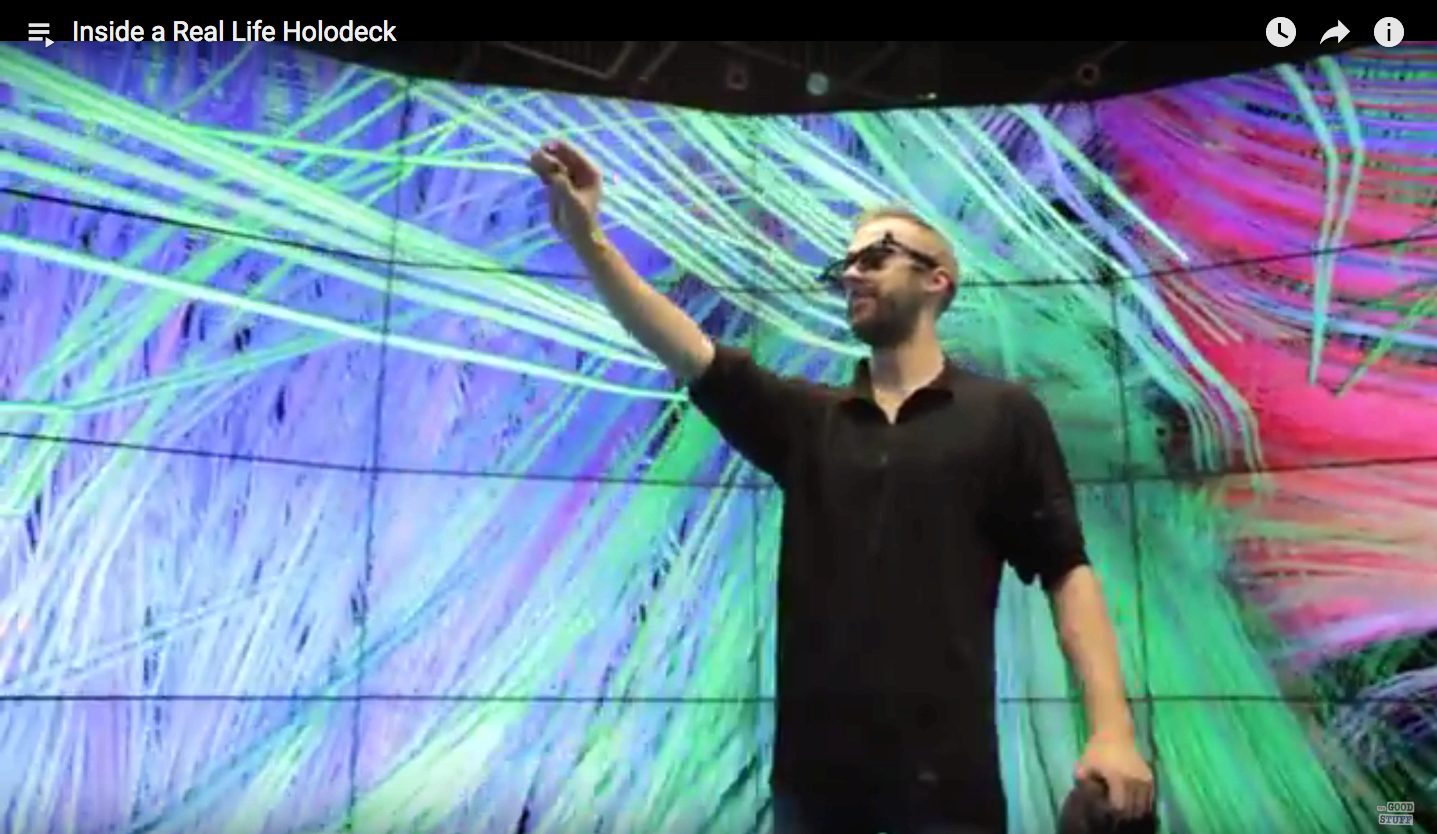Inside a Real Life Holodeck
June 13th, 2017
Categories: Applications, Devices, Human Factors, Industrial VR, Tele-Immersion, User Groups, Virtual Medicine, Visualization, VR, VR Art, Tele-Collaboration, Remote Collaboration

About
JUNE 13, 2017 - Ryan Wolff and David Wolff, producers of the documentary web series “The Good Stuff,” recently completed a program on virtual-reality headsets, but “as awesome as the experience was,” says Ryan, “it’s isolating. Wouldn’t it be cool if there was a virtual-reality room you could share with other people, so your friends could actually see and experience what you’re seeing? Could such a place actually exist? In Chicago? Five miles from where I live?”
Those questions prompted a visit to the Electronic Visualization Laboratory (EVL) at the University of Illinois at Chicago (UIC), to talk with Computer Science Associate Professor and EVL Director of Research Andy Johnson, and to see and experience the CAVE2 Hybrid Reality Environment. In their documentary “Inside a Real Life Holodeck,” Ryan exclaims, “The idea of a room you can just walk into and have it simulate any environment that you want has been a big part of Sci Fi and fantasy series for a long time, except that this time...there’s a real-life Holodeck sitting in an engineering building on a college campus.”
The 11 minute video also briefly talks about EVL’s rich history: its early days when engineers and visual artists collaborated in a UIC lab then known as the Circle Graphics Habitat; its development of the Sayre glove--the first wired data glove and precursor of the Nintendo Power Glove; its role in creating the Death Star plans in the first Star Wars movie; and, its development of the original CAVE Automatic Virtual Environment.
Andy Johnson understands the power of virtual reality; in the video, he describes his first experience in EVL’s CAVE in the early 1990s as “technology as magic.” His interview is insightful, from his views of the current state of virtual reality, to various scientific applications that help researchers understand our world, to future implications of virtual reality in our society.
Though all were in agreement that virtual-reality headsets are impressive, there is something special about the room-sized CAVE2’s ability to let participants “see people’s eyes, see their expressions, or know what they are pointing at or looking at in space.” Andy Johnson elaborates that “the lab…created a shared space where it’s the screens, the walls, that are active. So, you not only have a connection with the virtual space, but a strong connection between people.”
YouTube video: “Inside a Real Life Holodeck”